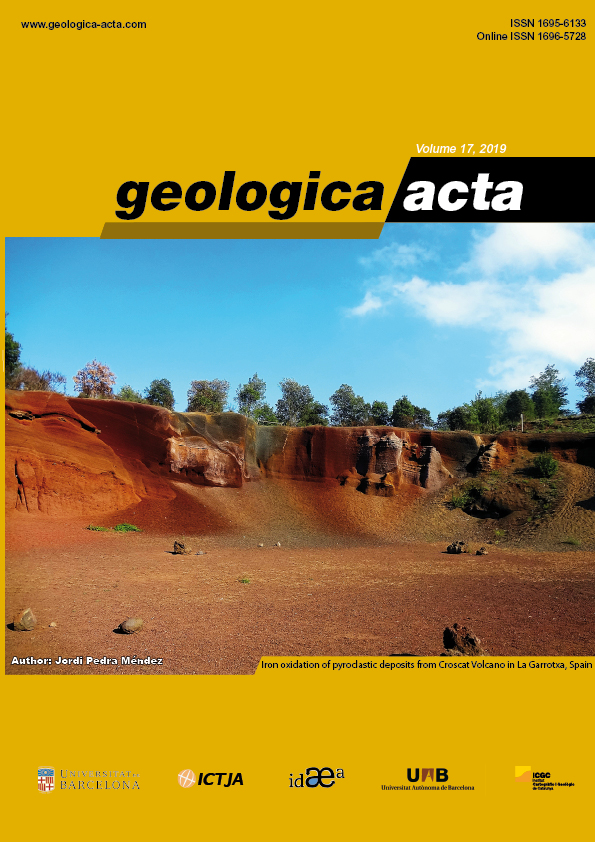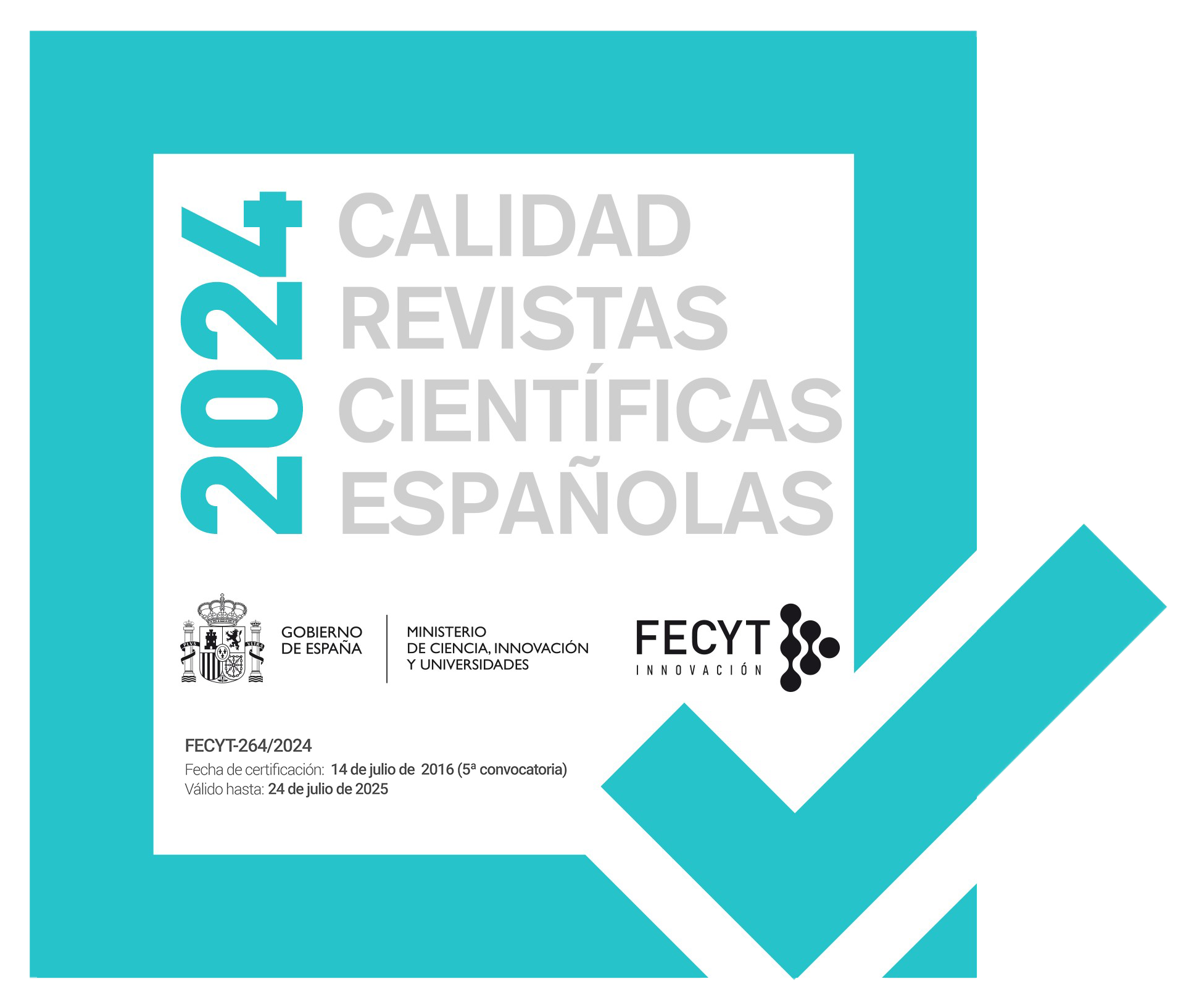Tourmaline records the hydrothermal events related to Zn-Pb mineralization around the Murguía diapir (Basque Cantabrian Basin, N Spain)
DOI:
https://doi.org/10.1344/GeologicaActa2019.17.5Keywords:
Tourmaline, Salt diapir, Zn-Pb deposits, Basque Cantabrian BasinAbstract
The chemical composition of tourmaline has been used as a host environment register as well as a potential exploration tool for mineral deposits. In this study, the textural and chemical composition of tourmalines associated with Zn-Pb mineralizations around the Murguía diapir (Basque Cantabrian Basin, N Spain) are examined to verify if they record the mineralizing events in the area. Petrographically, tourmalines have been differentiated between inherited and authigenic. Colorless authigenic tourmalines are present as halos partially around green and pleochroic detrital grains or as individual crystals. Inherited and authigenic tourmalines are also chemically distinct. Authigenic tourmalines show different X-site occupancies, a Mg/(Mg+Fe) ratio above 0.77, and are aluminum rich and plot to the right of the povondraite-oxidravite join, above the schorl-dravite join. Inherited tourmalines plot within the alkaline (Na+K) group field, and have a Mg/(Mg+Fe) ratio below 0.77. These data suggest that authigenic tourmalines grew under reducing conditions, compatible with the hydrothermal event responsible for the ore deposition and caprock formation during the diapir ascent.
References
Baksheev, I.A., Prokof’ev, V.Y., Yapaskurt, V.O., Vigasina, M.F., Zorina, L.D., Solov’ev, V.N., 2011. Ferric-iron-rich tourmaline from the Darasun gold deposit, Transbaikalia, Russia. The Canadian Mineralogist, 49(1), 263-276.
Dutrow, B.L., Henry, D.J., 2011. Tourmaline: A geological DVD. Elements, 7(5), 301-306.
Griffin, W.L., Slack, J.F., Ramsden, A.R., Win, T.T., Ryan, C.G., 1996. Trace elements in tourmalines from massive sulfides deposits and tourmalinites; geochemical controls and exploration applications. Economic Geology, 91(4), 657-675.
Hazarika, P., Mishra, B., Pruseth, KL., 2015. Diverse tourmaline compositions from orogenic gold deposits in the Hutti-Maski Greenstone Belt, India: implications for sources of oreforming fluids. Economic Geology, 110(2), 337–353.
Henry, D.J., Guidotti, C.V., 1985. Tourmaline as a petrogenetic indicator mineral- An example from the staurolite-grade
metapelites of NW Maine. American Mineralogist, 70(1-2), 1-15.
Henry, D.J., Kirkland, B.L., Kirkland, D.W., 1999. Sector-zoned tourmaline from the cap rock of a salt dome. European Journal of Mineralogy, 11(2), 263-280.
Henry, D.J., Sun, H., Slack, J.F., Dutrow, B.L., 2008. Tourmaline in meta-evaporites and highly magnesian rocks: perspectives
from Namibian tourmalinites. European Journal of Mineralogy, 20(5), 889-904.
Henry, D.J., Novák, M., Hawthorne, F.C., Ertl, A., Dutrow, B.L., Uher, P., Pezzotta, F., 2011. Nomenclature of the tourmalinesupergroup minerals. American Mineralogist, 96(5-6), 895-913.
Henry, D.J., Dutrow, B.L., 2012. Tourmaline at diagenetic to low-grade metamorphic conditions: Its petrologic applicability. Lithos, 154, 16-32.
Perona, J., Canals, À., Cardellach, E., 2018. Zn-Pb Mineralizations associated with salt diapirs in the BasqueCantabrian Basin (N Spain): Geology, geochemistry and genetic model. Economic Geology, 113(5), 1133-1159.
Ranta, J., Hanski, E., Cook, N., Lahaye, Y., 2017. Source of boron in the Palokas gold deposit, northern Finland: evidence from boron isotopes and major element composition of tourmaline. Mineralium Deposita, 52(5), 733-746.
Slack, J.F., Trumbull, R.B., 2011. Tourmaline as a recorder of ore-forming processes. Elements, 7(5), 321-326.
Tavani, S., Muñoz, J.A., 2012. Mesozoic rifting in the Basque–Cantabrian Basin (Spain): Inherited faults, transversal structures and stress perturbation. Terra Nova, 24(1), 70-76.
van Hinsberg, V.J., Henry, D.J., Marschall, H.R., 2011. Tourmaline: an ideal indicator of its host environment. The Canadian Mineralogist, 49(1), 1-16.
von Goerne, G., Franz, G., Heinrich, W., 2001. Synthesis of tourmaline solid solutions in the system Na2O–MgO–Al2O3–SiO2–B2O3–H2O–HCl and the distribution of Na between tourmaline and fluid at 300 to 700ºC and 200 MPa. Contributions to Mineralogy and Petrology, 141(2), 160-173. DOI: 10.1007/s004100100243
Žáček, V., Frýda, J., Petrov, A., Hyršl, J., 2000. Tourmalines of the povondraite- (oxy)dravite series from the cap rock of meta-evaporite in Alto Chapare, Cochabamba, Bolivia. Journal of Czech Geological Society, 45(1-2), 3-12.
Downloads
Published
Issue
Section
License
Copyright (c) 2019 Geologica Acta

This work is licensed under a Creative Commons Attribution-ShareAlike 4.0 International License.
Copyright
Geologica Acta is the property of the UB, GEO3BCN, IDAEA and UAB. Geologica Acta must be cited for any partial or full reproduction. Papers are distributed under the Attribution-Share Alike Creative Commons License. This license allows anyone to reproduce and disseminate the content of the journal and even make derivative works crediting authorship and provenance and distributing possible derivative works under the same or an equivalent license.
Author Rights
Authors retain the copyright on their papers and are authorized to post them on their own web pages or institutional repositories. The copyright was retained by the journal from the year 2003 until 2009. In all cases, the complete citation and a link to the Digital Object Identifier (DOI) of the article must be included.
The authors can use excerpts or reproduce illustrations of their papers in other works without prior permission from Geologica Acta provided the source of the paper including the complete citation is fully acknowledged.




